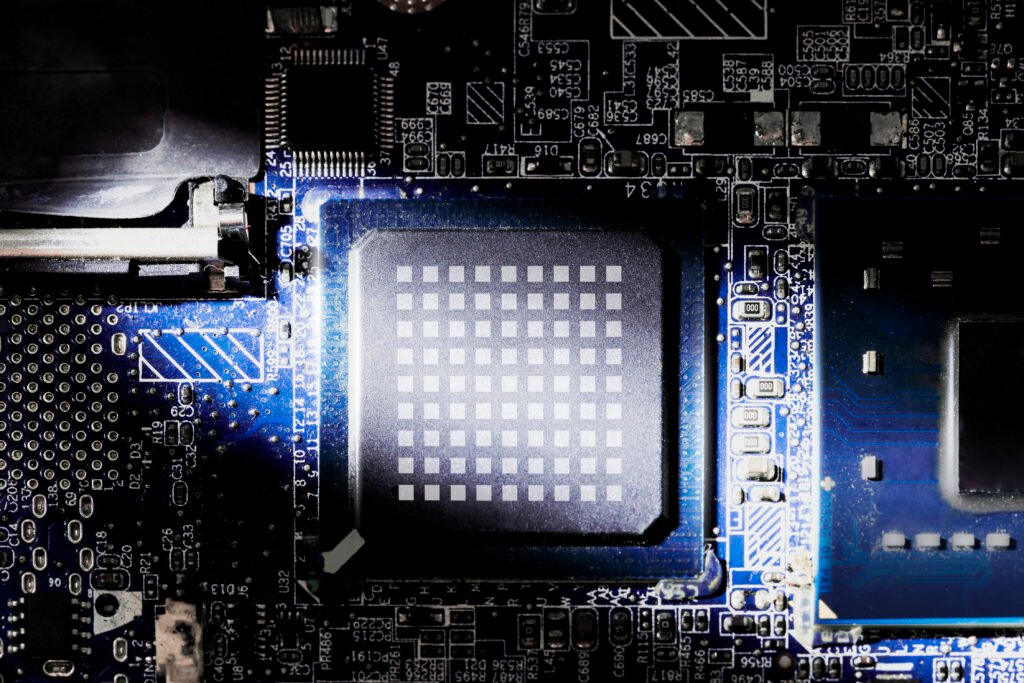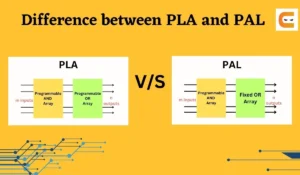FPGA vs Processor: FPGAs (Field Programmable Gate Arrays) vs processors are two of the most common computing devices used in modern electronics.
While both devices are capable of performing complex computations, they differ significantly in terms of their architecture and functionality.
In this article, we will explore the differences between FPGAs and processors, and examine the strengths and weaknesses of each device.
FPGAs are programmable logic devices that can be configured to perform a wide range of tasks.
Unlike processors, which are designed to execute a specific set of instructions, FPGAs can be programmed to perform a variety of functions by changing the configuration of their logic gates.
This makes FPGAs highly versatile and adaptable, and they are often used in applications where flexibility and customization are important.
However, FPGAs can be more difficult to program than processors, and they may require specialized knowledge and tools to use effectively.
Fundamentals of FPGA and Processor
Definition of FPGA
Field Programmable Gate Array (FPGA) is a type of programmable logic device that can be reprogrammed after manufacturing.
It consists of a matrix of programmable logic blocks interconnected by programmable routing channels.
The FPGA can be programmed to perform any digital function, including complex operations such as signal processing, cryptography, and networking.
FPGAs are highly versatile and can be used in a wide range of applications, including aerospace, automotive, telecommunications, and consumer electronics.
They are particularly well-suited for applications that require high performance, low latency, and low power consumption.
Definition of Processor
A processor, also known as a central processing unit (CPU), is a device that executes instructions to perform a specific task.
It is the brain of a computer and is responsible for performing arithmetic and logical operations, managing memory, and controlling input/output operations.
Processors are used in a wide range of devices, including personal computers, smartphones, and servers.
They are designed to be general-purpose and can be programmed to perform a variety of tasks.
They are particularly well-suited for applications that require high-speed computation, such as scientific simulations and data analysis.
In summary, FPGAs and processors are two different types of devices that can be used to perform digital functions.
FPGAs are highly versatile and can be reprogrammed to perform any digital function, while processors are designed to be general-purpose and can be programmed to perform a variety of tasks.
Architecture Comparison
FPGA Architecture
FPGA stands for Field Programmable Gate Array. As the name suggests, an FPGA is a programmable integrated circuit that can be configured by a user to perform specific tasks.
The architecture of an FPGA consists of an array of programmable logic blocks interconnected by programmable interconnects.
These programmable logic blocks can be configured to perform various functions such as arithmetic operations, logic operations, and memory operations.
One of the key advantages of an FPGA is its ability to be reprogrammed to perform different tasks. This makes it a popular choice for applications that require flexibility and adaptability.
FPGAs are also known for their high performance and low power consumption compared to traditional processors.
Processor Architecture
A processor is a general-purpose computing device that can execute a set of instructions called a program.
The architecture of a processor consists of a central processing unit (CPU), memory, and input/output (I/O) interfaces.
The CPU is responsible for executing instructions and performing arithmetic and logic operations.
Processors are designed to be general-purpose, meaning they can perform a wide variety of tasks. However, this also means that they are not optimized for specific tasks.
Processors also require a significant amount of power to operate, which can limit their use in power-constrained applications.
In summary, FPGAs and processors have different architectures optimized for different applications.
FPGAs are highly flexible and can be reprogrammed to perform different tasks, while processors are general-purpose devices optimized for executing a wide variety of tasks.
Performance Metrics
Processing Speed
When it comes to processing speed, FPGAs have the upper hand over processors.
This is because FPGAs are designed to perform specific tasks and can execute them in parallel, while processors are designed to perform a wide range of tasks and execute them sequentially.
This means that FPGAs can complete complex tasks faster than processors, especially when it comes to tasks that involve a large amount of data.
Power Efficiency
FPGAs are also more power-efficient than processors. This is because FPGAs are designed to perform specific tasks with minimal power consumption, while processors consume more power due to their wide range of capabilities.
In addition, FPGAs can be programmed to shut down unused components, which further reduces power consumption.
Flexibility and Adaptability
While FPGAs excel in processing speed and power efficiency, processors are more flexible and adaptable.
Processors can be easily programmed to perform a wide range of tasks, while FPGAs require specific programming for each task.
In addition, processors can be upgraded with new software, while FPGAs require physical changes to their hardware.
In summary, FPGAs are ideal for tasks that require high processing speed and power efficiency, while processors are better suited for tasks that require flexibility and adaptability.
When choosing between the two, it is important to consider the specific requirements of the task at hand.
Application Domains
FPGA Applications
FPGAs are commonly used in applications that require high-speed processing and parallel processing capabilities.
They are used in applications such as digital signal processing, image processing, and video processing.
FPGAs are also used in applications that require high-speed data transfer, such as networking and telecommunications.
FPGAs are also used in applications that require a high degree of customization.
Because FPGAs can be programmed to perform specific functions, they are often used in applications that require custom logic circuits.
FPGAs are also used in applications that require a high degree of reliability, such as aerospace and defense applications.
Processor Applications
Processors are commonly used in applications that require general-purpose computing capabilities.
They are used in applications such as desktop and laptop computers, servers, and mobile devices.
Processors are also used in applications that require real-time processing, such as control systems and robotics.
Processors are also used in applications that require a high degree of software support.
Because processors are designed to run software, they are often used in applications that require complex software algorithms.
Processors are also used in applications that require a high degree of flexibility, such as software-defined radio and software-defined networking.
In summary, FPGAs and processors are used in different application domains.
FPGAs are commonly used in applications that require high-speed processing, parallel processing, customization, and reliability.
Processors are commonly used in applications that require general-purpose computing capabilities, real-time processing, software support, and flexibility.
Cost and Development Considerations
Hardware Costs
When it comes to hardware costs, FPGAs are generally more expensive than processors.
This is because FPGAs are specialized hardware that are designed for specific tasks, whereas processors are general-purpose hardware that can perform a wide range of tasks.
In addition to the initial hardware costs, FPGAs also require additional costs for programming and configuration.
This is because FPGAs are programmed using hardware description languages, which require specialized knowledge and tools.
On the other hand, processors can be programmed using high-level programming languages, which are more accessible and easier to learn.
Development Complexity
FPGAs are generally more complex to develop than processors. This is because FPGAs require specialized knowledge and tools for programming and configuration. In addition, FPGAs require more time and effort for testing and verification, as they are designed for specific tasks and must be thoroughly tested to ensure that they are functioning correctly.
Processors, on the other hand, are generally easier to develop than FPGAs. This is because processors are designed to be more flexible and adaptable, and can perform a wide range of tasks. In addition, processors are easier to program and test, as they can be programmed using high-level programming languages and tested using standard software testing tools.
Overall, the choice between FPGAs and processors depends on the specific requirements of the project. If the project requires specialized hardware for specific tasks, then FPGAs may be the better choice despite the higher costs and development complexity. However, if the project requires more flexibility and adaptability, then processors may be the better choice due to their lower costs and easier development.
Frequently Asked Questions
1) What are the performance differences between FPGAs and CPUs?
FPGAs and CPUs have different architectures and are designed for different purposes. CPUs are general-purpose processors that can perform a wide range of tasks, while FPGAs are highly specialized processors that can be programmed to perform specific tasks with great efficiency. In terms of raw processing power, CPUs are generally faster than FPGAs, but FPGAs can perform certain tasks much more efficiently than CPUs.
2) How do FPGAs compare to GPUs in terms of deep learning capabilities?
FPGAs and GPUs are both used for accelerating deep learning applications, but they have different strengths and weaknesses. FPGAs are highly flexible and can be programmed to perform a wide range of tasks, while GPUs are optimized for matrix operations and are therefore more efficient at performing certain types of deep learning tasks. In general, GPUs are faster than FPGAs for deep learning, but FPGAs can provide better energy efficiency and can be more easily customized for specific applications.
3) Can FPGAs serve as a viable replacement for traditional microprocessors?
FPGAs and microprocessors have different strengths and weaknesses and are designed for different purposes. Microprocessors are general-purpose processors that can perform a wide range of tasks, while FPGAs are highly specialized processors that can be programmed to perform specific tasks with great efficiency. While FPGAs can be used to replace microprocessors in certain applications, they are generally not suitable for general-purpose computing tasks.
4) What distinguishes an FPGA from an ASIC in terms of application use?
FPGAs and ASICs are both highly specialized processors, but they have different design methodologies and are used for different types of applications. FPGAs are programmable logic devices that can be reconfigured to perform different tasks, while ASICs are custom-designed chips that are optimized for specific applications. FPGAs are more flexible than ASICs, but ASICs can provide better performance and energy efficiency for specific applications.
5) How does the latency of CPU operations compare to that of FPGA-based processing?
FPGAs can provide much lower latency than CPUs for certain types of applications, due to their highly parallel architecture and ability to perform tasks in hardware rather than software. However, the latency of FPGA-based processing can be higher than that of CPU-based processing for other types of applications, due to the overhead of programming and configuring the FPGA.
6) In what scenarios is an FPGA more advantageous than a microcontroller?
FPGAs are generally more advantageous than microcontrollers for applications that require high performance and flexibility, such as signal processing, image and video processing, and machine learning. Microcontrollers are better suited for applications that require low power consumption and real-time control, such as embedded systems and IoT devices.


![What is FPGA Introduction to FPGA Basics [2023] computer-chip-dark-background-with-word-intel-it](https://fpgainsights.com/wp-content/uploads/2023/06/computer-chip-dark-background-with-word-intel-it-300x171.jpg)









